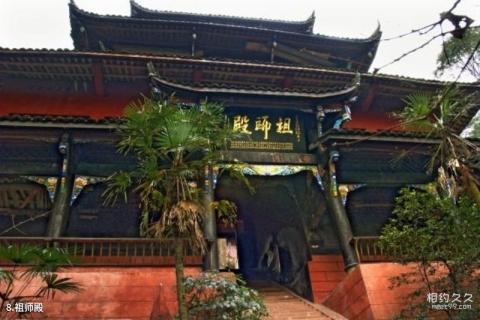
Introduction to the Ancestral Hall: The Ancestral Hall, formerly known as Dongtian Temple and Qingdu Temple, was first built in the Jin Dynasty and destroyed in the late Ming Dynasty. During the Qing Dynasty, the Qianlong Emperor rebuilt the ancestral hall with 57,000 yuan, and the shrine plaque still exists. It is dedicated to Emperor Zhenwu and Patriarch Sanfeng, hence the name Zhenwu Palace, also called Patriarch Hall. The existing palace was built in the fourth year of Tongzhi in the Qing Dynasty (1865). It is a small and exquisite courtyard. It is backed by Xuanyuan Peak and faces Baiyun River. It is the reading place of Du Guangting, a great Taoist scholar in the Tang Dynasty). In addition, there are Yunsong Pagoda inscribed by Huang Yunhu of the Qing Dynasty, and the newly built Lingguan Hall and guest rooms in 1993.
General Feng Yuxiang came to Qingcheng Mountain three times to stay during the Anti-Japanese War. In 1945, he lived in the Zushi Palace. In August of that year, Japanese imperialism announced its unconditional surrender. When the general heard about the victory, he was overjoyed. He built a pavilion and carved a monument next to the view to commemorate the victory of the Anti-Japanese War. The stele has now been moved to the Patriarch's Hall to be preserved as a cultural relic for people to admire.
Walking up the Zushi Palace, you can reach Xuanhuangding, which is 1,247 meters above sea level. There is an ancient platform on the top of the mountain, the famous Xuanhuangtai. You can overlook the scenery of Weijiang. Looking down, the peaks are like ant hills, and the scenery is excellent.
